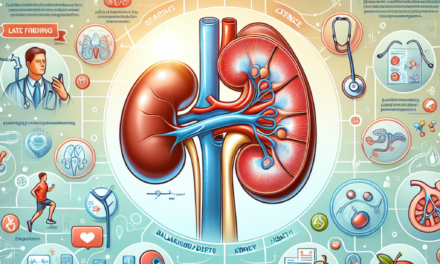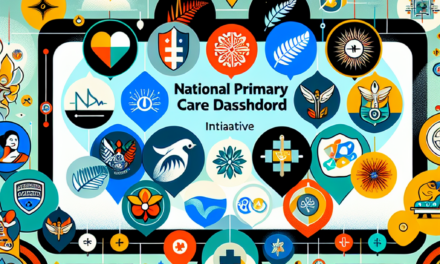Harnessing Collaboration for Innovations in MedTech
The MedTech industry is at the forefront of healthcare innovation, driven by rapid technological advancements and an increasing demand for improved patient outcomes. As the landscape evolves, collaboration emerges as a critical factor in fostering innovation. This article explores how collaboration among various stakeholders—such as healthcare providers, technology companies, regulatory bodies, and patients—can lead to groundbreaking advancements in medical technology. We will delve into five key areas: the importance of interdisciplinary collaboration, the role of partnerships in research and development, the impact of regulatory collaboration, the significance of patient involvement, and the future of collaborative innovation in MedTech.
The Importance of Interdisciplinary Collaboration
Interdisciplinary collaboration is essential in MedTech, as it brings together diverse expertise from various fields to address complex healthcare challenges. This collaboration often involves professionals from medicine, engineering, computer science, and design, among others. By integrating different perspectives, interdisciplinary teams can develop innovative solutions that are both effective and user-friendly.
One notable example of interdisciplinary collaboration is the development of wearable health devices. Engineers, designers, and healthcare professionals work together to create devices that monitor vital signs, track physical activity, and provide real-time feedback to users. This collaboration ensures that the devices are not only technologically advanced but also meet the needs of patients and healthcare providers.
Moreover, interdisciplinary collaboration can lead to the creation of new fields, such as biomedical engineering, which combines principles from engineering and biological sciences to develop medical devices and technologies. This field has seen significant growth in recent years, with universities and research institutions establishing dedicated programs to train professionals who can bridge the gap between engineering and medicine.
- Enhanced Problem-Solving: Diverse teams can approach problems from multiple angles, leading to more comprehensive solutions.
- Innovation Acceleration: Collaboration can speed up the innovation process by pooling resources and expertise.
- Improved User-Centric Design: Involving designers and end-users in the development process ensures that products are intuitive and meet user needs.
In addition to enhancing problem-solving capabilities, interdisciplinary collaboration fosters a culture of innovation. When professionals from different backgrounds come together, they are more likely to challenge each other’s assumptions and push the boundaries of what is possible. This culture of innovation is crucial in the fast-paced MedTech industry, where staying ahead of the competition requires constant adaptation and creativity.
Furthermore, interdisciplinary collaboration can lead to more effective training and education for future healthcare professionals. By exposing students to a variety of disciplines, educational institutions can prepare them to work in collaborative environments, equipping them with the skills needed to thrive in the evolving MedTech landscape.
The Role of Partnerships in Research and Development
Partnerships play a pivotal role in the research and development (R&D) of new medical technologies. Collaborations between academic institutions, private companies, and government agencies can lead to significant advancements in MedTech. These partnerships often leverage the strengths of each entity, combining academic research with commercial expertise to bring innovative products to market.
For instance, the collaboration between universities and pharmaceutical companies has led to the development of groundbreaking therapies and medical devices. Academic institutions often conduct fundamental research that lays the groundwork for new technologies, while private companies provide the resources and infrastructure needed to translate that research into viable products.
One successful example of such a partnership is the collaboration between Stanford University and Medtronic, a leading medical device company. Together, they developed a novel insulin delivery system that utilizes advanced algorithms to optimize blood sugar control for diabetes patients. This partnership combined Stanford’s cutting-edge research in diabetes management with Medtronic’s expertise in medical device manufacturing, resulting in a product that significantly improves patient outcomes.
- Access to Funding: Partnerships can provide access to funding sources that may not be available to individual entities.
- Shared Resources: Collaborating organizations can share facilities, equipment, and expertise, reducing costs and accelerating development timelines.
- Risk Mitigation: By sharing the risks associated with R&D, partners can pursue more ambitious projects that may have been too risky for a single entity.
Moreover, partnerships can enhance the credibility of new technologies. When a reputable academic institution collaborates with a well-known company, it can instill confidence in investors, healthcare providers, and patients. This credibility is essential for gaining regulatory approval and achieving market acceptance.
However, successful partnerships require effective communication and alignment of goals. Organizations must establish clear expectations and maintain open lines of communication to ensure that all parties are working towards a common objective. Regular meetings, progress updates, and collaborative decision-making processes can help facilitate this alignment.
The Impact of Regulatory Collaboration
Regulatory collaboration is another critical aspect of fostering innovation in MedTech. The regulatory landscape for medical devices is complex and varies significantly across different regions. Collaborating with regulatory bodies can help companies navigate this landscape more effectively, ensuring that their products meet safety and efficacy standards while also expediting the approval process.
One example of regulatory collaboration is the FDA’s Breakthrough Devices Program, which aims to expedite the development and review of devices that provide more effective treatment or diagnosis for life-threatening or irreversibly debilitating conditions. By working closely with device manufacturers, the FDA can provide guidance on clinical trial design and regulatory requirements, helping companies bring their innovations to market more quickly.
Additionally, international regulatory collaboration can facilitate the global adoption of new technologies. Organizations such as the International Medical Device Regulators Forum (IMDRF) work to harmonize regulatory requirements across different countries, making it easier for companies to enter new markets. This collaboration can lead to faster access to innovative medical technologies for patients worldwide.
- Streamlined Approval Processes: Collaborative efforts can lead to more efficient regulatory pathways, reducing time to market.
- Increased Transparency: Open communication between regulators and manufacturers can enhance understanding of regulatory expectations.
- Global Market Access: Harmonized regulations can facilitate the entry of innovative products into international markets.
However, regulatory collaboration also presents challenges. Companies must navigate the differing requirements of various regulatory bodies while ensuring compliance with local laws. This complexity can be particularly daunting for startups and small businesses with limited resources. To address these challenges, companies can engage regulatory consultants or form partnerships with established firms that have experience in navigating the regulatory landscape.
Ultimately, effective regulatory collaboration can lead to a more efficient and predictable approval process, encouraging innovation and investment in the MedTech sector. By fostering a collaborative environment between regulators and manufacturers, the industry can continue to develop groundbreaking technologies that improve patient care.
The Significance of Patient Involvement
Patient involvement is a crucial component of innovation in MedTech. Engaging patients in the development process ensures that new technologies address their needs and preferences, leading to better adoption and outcomes. By incorporating patient feedback, companies can create products that are not only effective but also user-friendly and aligned with patients’ lifestyles.
One example of successful patient involvement is the development of patient-centered medical devices. Companies like Philips have implemented patient advisory boards to gather insights from patients and caregivers during the design process. This collaboration has led to the creation of devices that are easier to use and more effective in managing chronic conditions.
Moreover, patient involvement can enhance clinical trial design. By including patients in discussions about trial protocols, companies can ensure that studies are designed with patient needs in mind. This approach can lead to higher enrollment rates, improved retention, and more meaningful outcomes. For instance, the inclusion of patient-reported outcomes in clinical trials has become increasingly important, as it provides valuable insights into the impact of treatments on patients’ quality of life.
- Improved Product Design: Patient feedback can lead to more intuitive and user-friendly devices.
- Higher Adoption Rates: Products that meet patient needs are more likely to be embraced by users.
- Enhanced Clinical Trials: Patient involvement can improve trial design and outcomes, leading to more successful product launches.
Furthermore, involving patients in the innovation process can foster a sense of ownership and empowerment. When patients feel that their voices are heard and their needs are prioritized, they are more likely to engage with new technologies and adhere to treatment plans. This engagement is particularly important in managing chronic conditions, where ongoing adherence to treatment is essential for achieving positive health outcomes.
However, effectively engaging patients in the innovation process requires a commitment to transparency and communication. Companies must be willing to listen to patient feedback and incorporate it into their development processes. This may involve conducting surveys, focus groups, or interviews to gather insights from diverse patient populations.
The Future of Collaborative Innovation in MedTech
The future of collaborative innovation in MedTech is promising, driven by advancements in technology and an increasing emphasis on patient-centered care. As the industry continues to evolve, collaboration will play a central role in shaping the next generation of medical technologies.
One emerging trend is the integration of artificial intelligence (AI) and machine learning into MedTech. These technologies have the potential to revolutionize diagnostics, treatment planning, and patient monitoring. Collaborative efforts between data scientists, healthcare professionals, and technology companies will be essential in harnessing the full potential of AI in healthcare.
For example, AI algorithms can analyze vast amounts of patient data to identify patterns and predict outcomes. By collaborating with healthcare providers, technology companies can develop AI-driven tools that support clinical decision-making and improve patient care. This collaboration will require ongoing dialogue between stakeholders to ensure that AI solutions are ethical, transparent, and aligned with patient needs.
- Increased Focus on Telehealth: The COVID-19 pandemic has accelerated the adoption of telehealth, highlighting the need for collaborative solutions that enhance remote patient monitoring and care.
- Emphasis on Data Sharing: Collaborative efforts to share data across organizations can lead to more comprehensive insights and improved patient outcomes.
- Growth of Digital Health Startups: The rise of digital health startups is driving innovation, necessitating partnerships with established companies and healthcare providers.
Additionally, the growing emphasis on value-based care will require collaboration among stakeholders to develop technologies that demonstrate measurable outcomes and cost-effectiveness. As healthcare systems shift towards value-based models, MedTech companies will need to work closely with providers and payers to ensure that their products align with these goals.
In conclusion, harnessing collaboration is essential for driving innovation in the MedTech industry. By fostering interdisciplinary collaboration, forming strategic partnerships, engaging with regulatory bodies, involving patients, and embracing emerging technologies, stakeholders can create a more innovative and effective healthcare landscape. As the industry continues to evolve, collaboration will remain a key driver of success, enabling the development of groundbreaking medical technologies that improve patient care and outcomes.
Conclusion
In summary, collaboration is a powerful catalyst for innovation in the MedTech sector. By bringing together diverse expertise, fostering partnerships, engaging with regulatory bodies, involving patients, and embracing new technologies, stakeholders can drive meaningful advancements in medical technology. The future of MedTech is bright, and collaboration will be at the heart of this transformation, leading to improved patient outcomes and a more efficient healthcare system.





